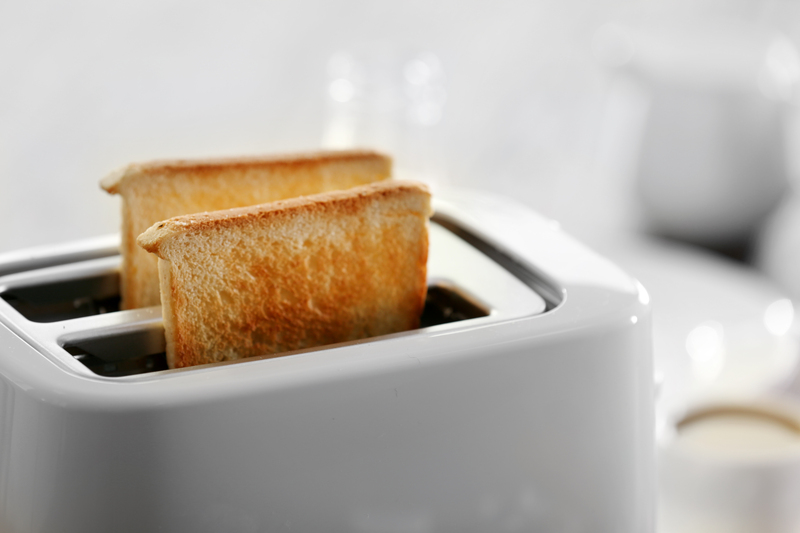Tackle Damp Smell with These Practical Tips
Posted on 15/06/2025
Tackle Damp Smell with These Practical Tips
A damp smell in the home is more than just a minor inconvenience. It can affect the comfort of your living space, impact indoor air quality, and sometimes even indicate more serious underlying problems like mold growth or water leaks. If you're tired of that musty odor lingering in your house, you've come to the right place. In this comprehensive article, we'll show you how to get rid of damp smells, prevent them from coming back, and create a fresher, healthier home.
Understanding the Source of Damp Odor
Before you tackle the musty smell in your house, it's important to understand what causes it. A persistent damp odor is usually the result of excess moisture, inadequate ventilation, or hidden water damage. Sometimes, the smell is a warning sign of deeper issues, such as black mold, mildew, or decaying organic material.
Common Causes of Damp Smells
- Poor Ventilation: Closed-up spaces trap humidity, creating a breeding ground for musty odors.
- Water Leaks: Leaky pipes, roofs, or windows can introduce unwanted moisture into your home's structure.
- Rising Damp: Moisture from the ground can rise through floors or walls.
- Condensation: Poor insulation or inadequate airflow promotes condensation on cold surfaces.
- Storage Issues: Damp clothes, cardboard, or furniture can all contribute to bad smells.
- Mold and Mildew: Fungi thrive in damp, dark environments and release distinctive, musty odors.
Identifying the root cause is the first step in effectively eliminating damp smells in your home.

How to Remove Damp Smell from Your Home
Ready to tackle musty odors and create a fresher space? Here are practical tips that go beyond just masking the smell--they target the problem at its source.
1. Improve Air Circulation
- Open Windows and Doors: Letting fresh air flow through rooms is the simplest way to reduce stale odors and humidity.
- Use Fans: Ceiling, box, or exhaust fans move humid air outside and replace it with drier, fresh air.
- Install Vents: In high-moisture areas (like the bathroom or kitchen), ensure vents are working and clear of blockages.
*Pro tip:* Even in winter, briefly airing out your home each day helps to eliminate damp smells and reduce condensation.
2. Dry Out Affected Areas
- Dehumidifiers: Portable or whole-house dehumidifiers can efficiently lower air moisture levels, especially in basements or laundry rooms.
- Heaters: Drying out rooms with gentle heat helps speed up evaporation of trapped moisture.
- Absorbent Materials: Place silica gel packets, activated charcoal, or bowls of baking soda in affected areas to draw out dampness and freshen the air.
Keep an eye out for condensation on windows, pipes, or uninsulated walls--these are trouble spots for recurring dampness odor.
3. Deep Clean Surfaces and Fabrics
- Hard Surfaces: Wipe down walls, floors, and furniture with a solution of water and white vinegar or a mild bleach mix. This neutralizes the smell and kills mold spores.
- Carpets and Rugs: Steam clean or shampoo, then allow to thoroughly dry. Sprinkle baking soda beforehand to absorb lingering odor.
- Upholstery: Fabric sofas, curtains, and cushions can be refreshed with upholstery sprays or by laundering if possible.
- Wardrobes and Closets: Remove everything, clean all surfaces, and let air out before replacing clothing or shoes.
*Remember*, damp and musty smells often cling to soft furnishings and textiles, so a thorough clean is essential.
4. Identify and Repair Water Leaks
- Check for Leaks: Inspect under sinks, behind appliances, attic spaces, and basements for any signs of dripping or standing water.
- Repair Promptly: Even minor leaks can cause persistent moisture and mold growth over time.
- Seal Cracks and Joints: Use waterproof sealant where water might seep in around windows, doors, or plumbing.
The longer you leave leaks, the worse both the dampness and musty smell will become--not to mention the potential for structural damage.
5. Treat Mold and Mildew Properly
- Small Areas: Clean with white vinegar, baking soda, or a specialist mold remover. Always wear gloves and a mask.
- Larger Infestations: For big or recurring mold problems, consult a professional. Mold can be hazardous to your health and requires safe removal.
- Dispose of Porous Materials: Severely affected items like soaked carpet or cushions may need to be thrown away.
Mold and mildew will keep producing odors until they're completely eradicated, so don't delay this step.
6. Prevent Future Damp Odors
Prevention is the best cure for household dampness. Try these strategies to keep musty smells from returning:
- Keep Gutters Clear: Blocked gutters can cause water to pool around your home's foundations or leak down exterior walls.
- Insulate Properly: Insulation not only keeps your home warm but also reduces condensation and the risk of damp.
- Use Moisture Barriers: For basements or crawl spaces, consider plastic sheeting, sealant, or special paints that repel water.
- Declutter: Avoid stacking boxes, clothes, or papers in damp-prone areas, as these absorb and hold moisture.
- Store Items Properly: Use airtight plastic tubs instead of cardboard, and never put away damp items.
Routine maintenance and vigilance are your allies against damp smell in the house.
Where Damp Smells Hide - Problem Areas to Inspect
Some parts of the home are more vulnerable to dampness and musty odors than others. Use this checklist to ensure you address all potential problem spots.
- Basements: Naturally cooler and often poorly ventilated, basements can harbor hidden mold, mildew, or water pooling behind stored items.
- Bathrooms: Insufficient extractor fans and shower steam make bathrooms prime locations for lingering mustiness.
- Laundry Rooms: Excess humidity from washing machines and dryers often gets trapped, soaking into fabrics and walls.
- Kitchens: Steam and cooking odors contribute, but leaks under the sink or behind appliances are common causes.
- Closets and Wardrobes: Crammed spaces with little ventilation are perfect for musty smells, especially if clothes are stored damp.
Quick Fixes for Immediate Relief from Musty Smells
If you need to neutralize a damp smell fast--before guests arrive, or while you work on a long-term fix--try these effective, natural deodorizing methods:
- Baking Soda: Place open containers or sprinkle on a musty-smelling carpet, leave for several hours, and then vacuum.
- Activated Charcoal: An excellent, reusable odor absorber--perfect in closets, cabinets, or under sinks.
- Vinegar Bowls: Set out small dishes of white vinegar overnight to absorb odors. (Don't worry, the vinegar smell evaporates quickly!)
- Coffee Grounds: Dried, used coffee grounds can also neutralize many stubborn household smells.
- Essential Oils: Add to a diffuser, or use a spray bottle with water to add a fresh, clean scent. Tea tree oil also has antimicrobial properties.
*Important:* These solutions mask odors but won't solve underlying dampness issues--always combine with the other steps in this guide!
Why You Shouldn't Ignore Damp Smells
- Health Risks: Mold and mildew can trigger allergies, asthma, and respiratory issues, especially in children, the elderly, or those with compromised immune systems.
- Structural Damage: Long-term moisture weakens wood, plaster, and brick, leading to expensive repairs.
- Reduced Property Value: Persistent damp and musty odors can make your home less attractive to buyers or renters.
- Worsening Over Time: The longer dampness is left untreated, the more ingrained--and harder to eliminate--it becomes.
Don't wait--act immediately when you notice signs of dampness odour.

Frequently Asked Questions About Tackling Damp and Musty Smells
1. Can air fresheners remove damp smells?
No. Air fresheners and scented candles can mask odors for a short time but won't address the root cause--excess moisture or mold growth. Always remove the source for a lasting solution.
2. What causes damp smells to return?
If you haven't fixed the underlying moisture problem--like broken gutters, condensation, or hidden leaks--damp odors are likely to return even after cleaning.
3. Is a musty smell dangerous?
A musty or damp smell may indicate the presence of mold or bacteria, which can be harmful to health. If in doubt, especially with black mold, always consult a professional.
4. How long does it take to get rid of a damp smell?
Depending on severity, minor odors can often be tackled within a day or two with ventilation and cleaning. Serious cases--with hidden mold, water damage, or persistent leaks--may require professional intervention and take longer to resolve.
Conclusion: A Fresh, Odor-Free Home is Within Reach
You don't have to put up with musty, damp smells in your home. By using these practical tips--from improving ventilation to finding and fixing water leaks, deep cleaning, and using natural deodorizers--you can reclaim your living space.
Remember to stay vigilant and address any signs of moisture or musty odors early. Proper prevention and regular maintenance will ensure a healthier, fresher home for you and your family. If the smell persists or is accompanied by health symptoms or extensive mold growth, don't hesitate to call a professional.
Tackle damp smell today and enjoy the fresh, inviting home you deserve!




